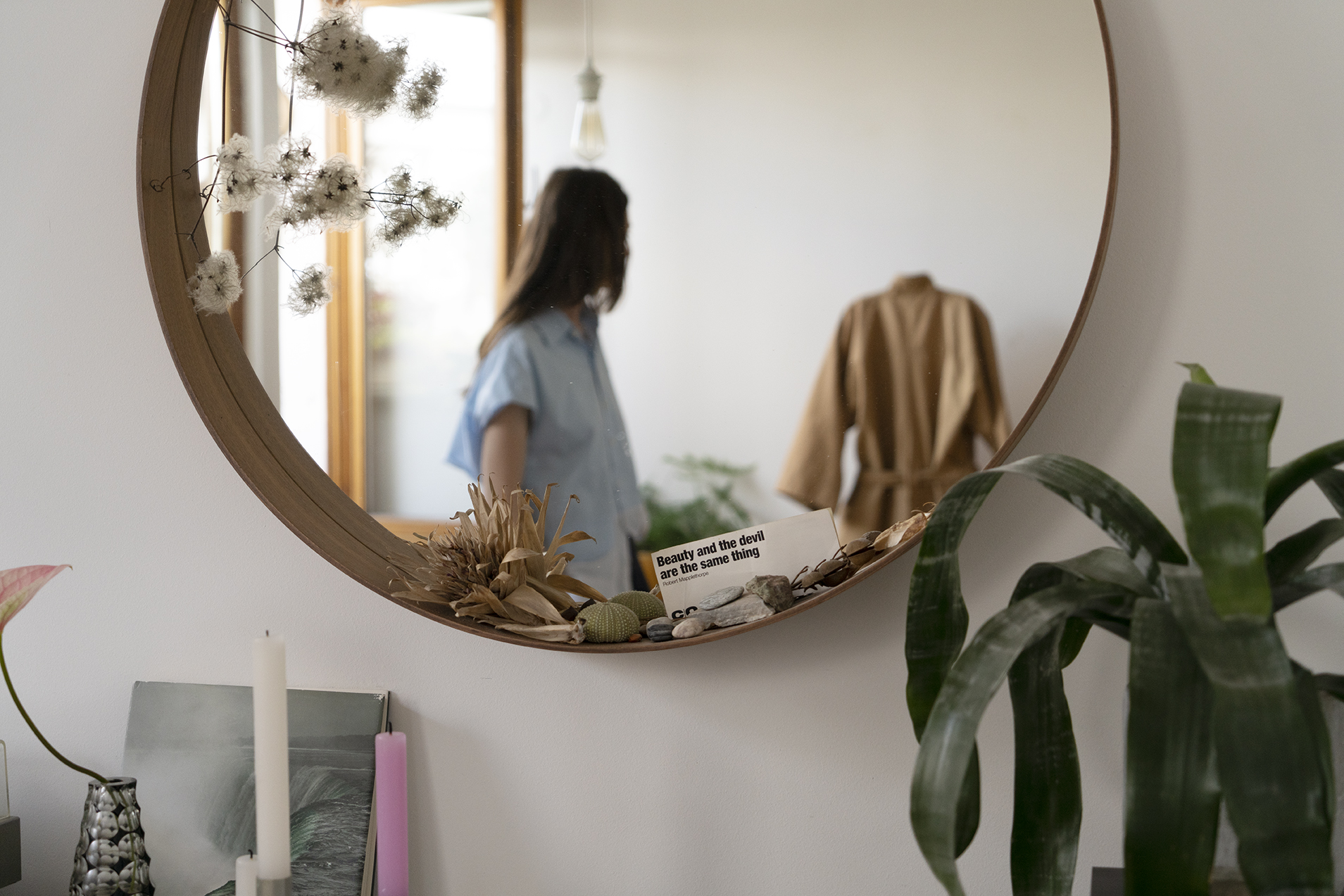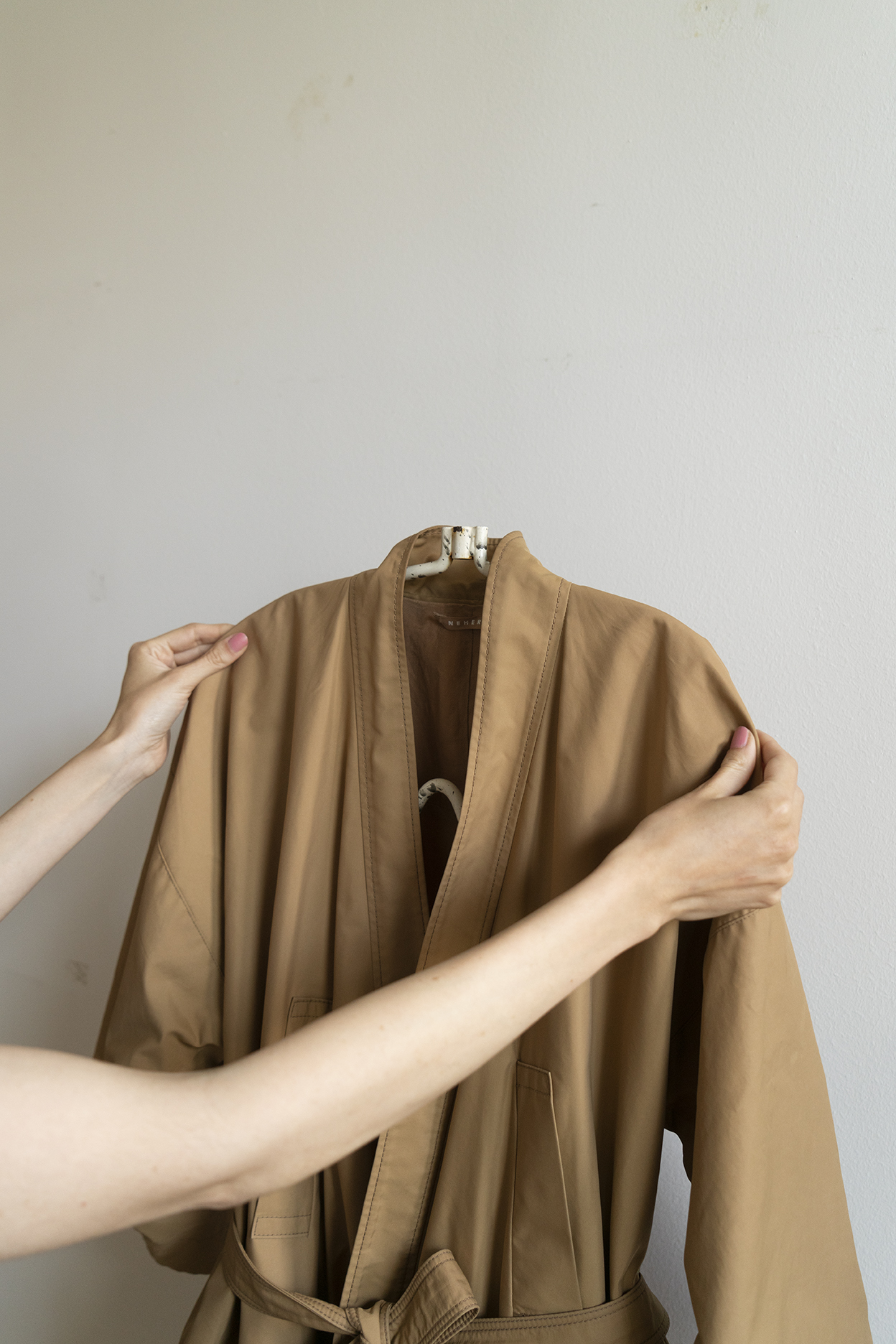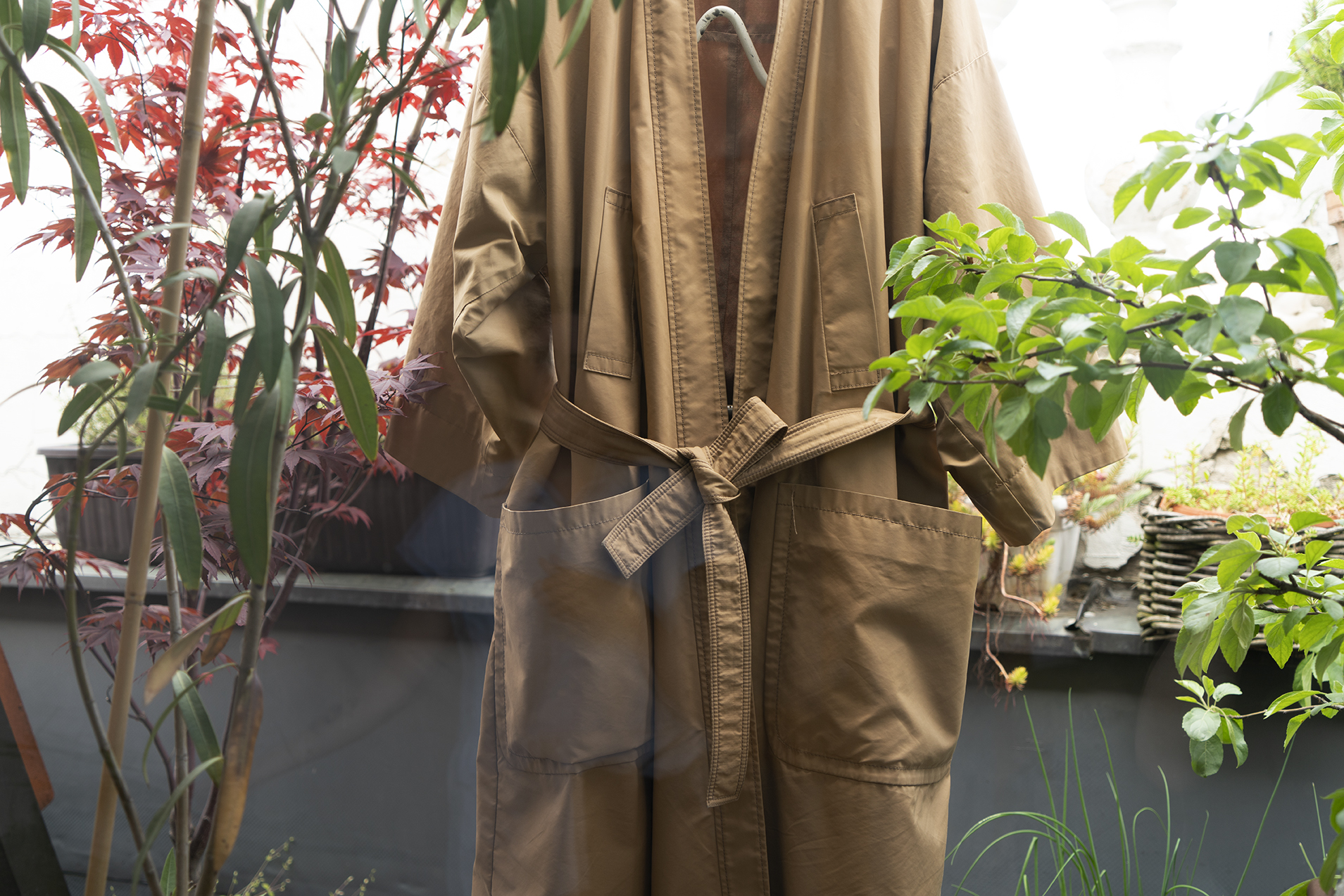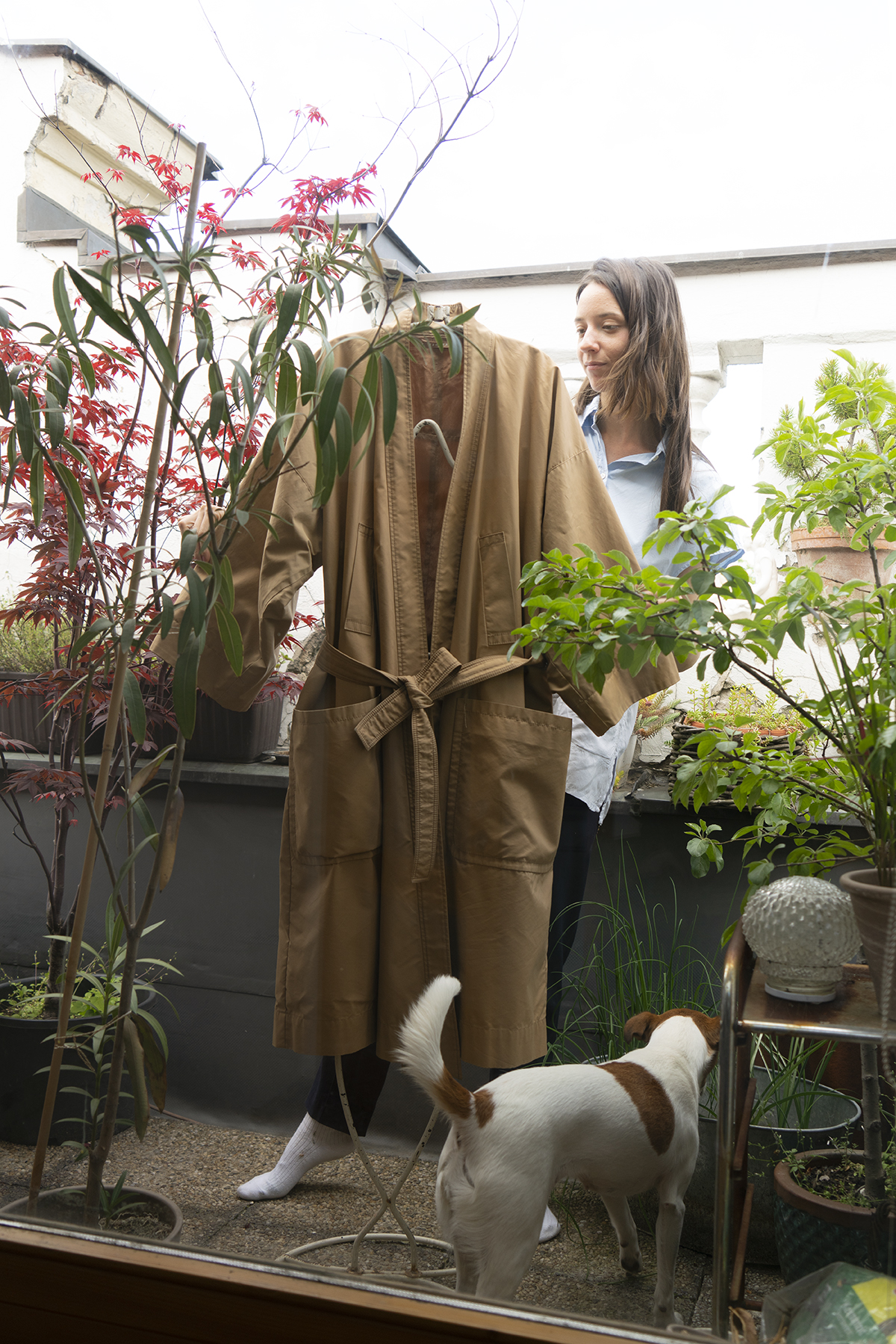Close Things / SAŠA GABRIŽOVÁ
Friend coat

Before our meeting, Sasha told me that she was choosing between three (close) objects. I had no idea what the winner would be, and with this pleasant expectation I entered her apartment on Štefánikova Street. I was both surprised and not surprised when she brought into the room a coat rack on which it hung – a coat. Sasha told me about the deep relationship we can develop with a piece of clothing – and how and by whom it was created is related to that.
When you wrote “close things”, I liked the pun in the title, that it talked about physical proximity as well. And this is really an object that is also a subject. As well as following the line of my body shell, it’s also just completely peculiar. Above all, I have the feeling that we are dressing each other – it dresses me, I in turn lend it my identity, thus completing its own.
I bought the coat in 2018. It’s from the period when the original Czechoslovak brand NEHERA, which had been operating globally since the 1930s, was brought back to the market by new owners and given its current form. French designer Samuel Drira, who had previously worked for fashion houses such as Hermés and The Row, was there at the time and redefined the brand’s identity. Here he had a completely clean space, to create something new, and at the same time build on the tradition and quality that had worked almost a century ago.
This coat was also created under his direction. I liked how Drira translated a certain vision of the modern woman into his work for NEHERA and what goals he set himself in doing so. Each garment was also a kind of analysis of the way someone would move in it and how they would react to body language. This “Drira” coat of mine is a fusion of an Eastern, Japanese kimono style with a certain “western twist”.
In retrospect, I realized that since I got it, I have gone through some process of self-awareness within my shopping and have begun to seek out not only local, but also structurally analytically thoughtful work, whether it be clothing or the objects I surround myself with. This coat was essentially that initial step.

When I bought it, it was just the hottest part of summer – and I was so eager to wear it! So our introduction moment took place a few weeks later, in Denmark, where I was invited to be on the jury of the Odense Film Festival. It was September, and I was totally delighted: September! Denmark! That sounds like the perfect combination of weather conditions for me and my new coat! When I finally put it on, I got dressed in a certain role that I love to play. I get off the train in this coat, walk up to the reception at the Plaza Hotel in it, say I have a reservation (laughs)…
Since then, we’ve travelled through several countries together… even continents. I was with it on a trip across America, and long after I got back, I still had grains of sand in my pockets that the wind blew in off the Atlantic Ocean. Although it’s a precious object to me, I carry it with me everywhere and don’t worry about it. We relive movie moments together. He’s almost like a person to me, a close person. When it’s warm, we take a break for a few months…and then we can look forward to seeing each other again.

I’m also thinking of Patti Smith, who in the book M Train recalls her Comme des Garçons coat that she got from someone and happened to lose. It was a black coat that she wore absolutely always and everywhere, and she wrote a wonderful essay about it in the book. When she lost it, she felt as if she had lost a good friend. I completely understand that – a coat like that lives through important moments, passages of life with a person – and how beautifully the right garment can complete the moment for us. I mean the feeling of being in the right material in a special moment, a material that works with the skin, that is light and breezy, or woolly and heavy, and can “ground” you, balance you out. That’s what I like about it.

And one more reason why I chose the coat – it’s an object that is “active”, it’s always in motion. I felt that it suited me better than if I had chosen a passive object. I like those because they create a feeling of home, but a coat like that is an element in motion, and it meets the elements – the wind, the rain, it absorbs it all into itself.
The coat no longer looks the way I bought it, but the shape definition is good, it still holds up. What’s most noticeable about the pockets is how close we’ve gotten – because I very often carry things in my pockets…everything! I throw my wallet and keys in one, the other fits a whole book, and I’m off for coffee.
I’ve even written a couple of diary entries about it. For example, when I carried it to the dry cleaners – that was a really stressful moment. But the lady was touching it with precise movements that were also vigorous. And she had long pink gel nails with glitter. I assessed that it would be fine in her charge.
As it lay there on the counter in the dry cleaners, I kept telling myself that I might own it, but it was such a…truly independent coat. I think both it and I appreciate that we can be together, but we also give each other that freedom.
“Every morning, I got up, put on my coat and watch cap, grabbed my pen and notebook, and headed across Sixth Avenue to my cafe. I loved my coat and the cafe and my morning routine. It was the clearest and simplest expression of my solitary identity.”
(Patti Smith, M Train)
Alexandra Gabrižová is currently working as a coordinator of the Festival Department at the Film and Television Faculty of the Academy of Performing Arts, where she also runs a seminar on festival strategies. Under the Disco Sailing brand, she is dedicated to promoting Slovak short films and developing festival strategies for several independent production companies. As a member of the editorial board, she contributes to the production and content of the filmological online portal Kinečko and occasionally publishes in several periodicals with a focus on film. She holds a Master’s degree from the Department of Audiovisual Studies at the Faculty of Film and Television Studies of the Academy of Performing Arts of the Czech Academy of Performing Arts.